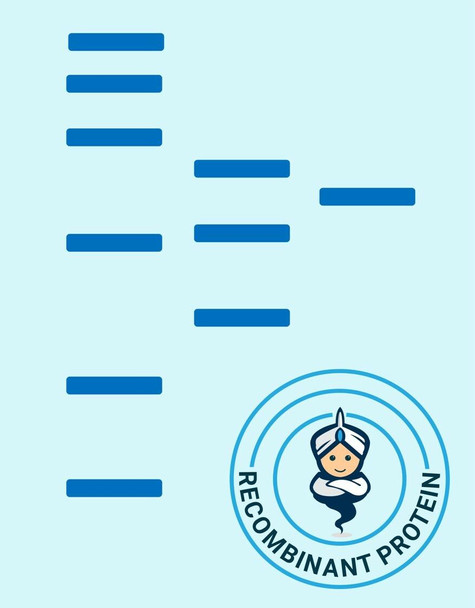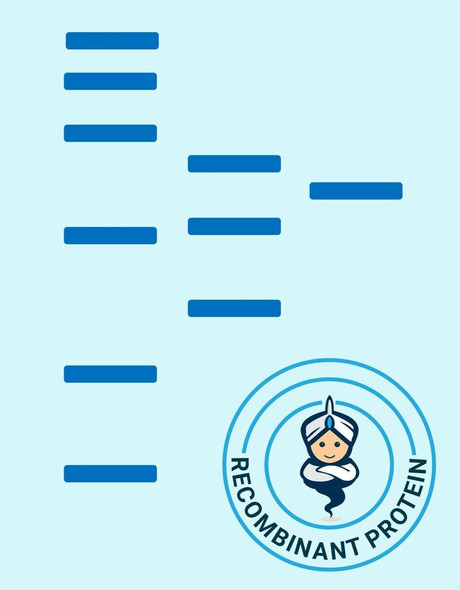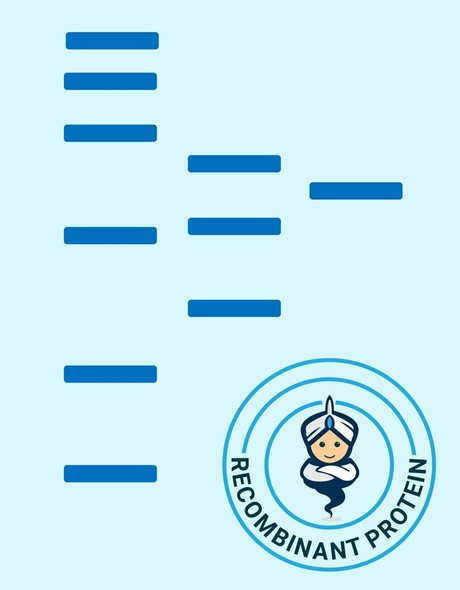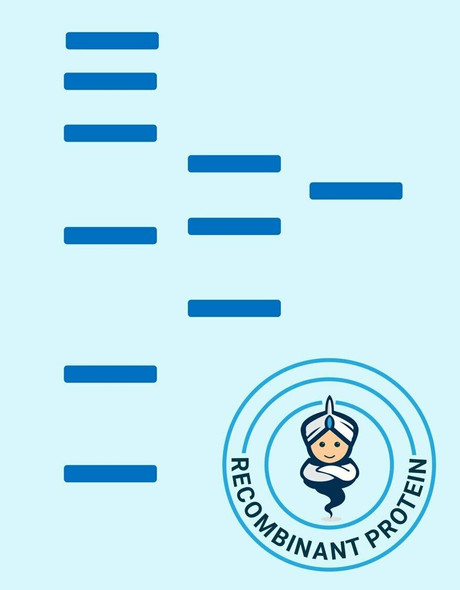Mouse 4-1BBR Recombinant Protein (RPPB5744)
- SKU:
- RPPB5744
- Product type:
- Recombinant Protein
- Size:
- 5ug
- Species:
- Mouse
- Target:
- 4-1BBR
- Synonyms:
- Tumor necrosis factor receptor superfamily member 9
- 4-1BB ligand receptor
- T-cell antigen 4-1BB
- CD137
- Source:
- Sf9 Insect cells
- Uniprot:
- P20334
Description
| Product Name: | Mouse 4-1BBR Recombinant Protein |
| Product Code: | RPPB5744 |
| Size: | 5µg |
| Species: | Mouse |
| Target: | 4-1BBR |
| Synonyms: | Tumor necrosis factor receptor superfamily member 9, 4-1BB ligand receptor, T-cell antigen 4-1BB, CD137. |
| Source: | Sf9 Insect cells |
| Physical Appearance: | Sterile Filtered colorless solution. |
| Formulation: | 4-1BBR protein solution (0.5mg/ml) contains PhosphateBuffered Saline (pH 7.4) and 10% glycerol. |
| Stability: | Store at 4°C if entire vial will be used within 2-4 weeks. Store, frozen at -20°C for longer periods of time. For long term storage it is recommended to add a carrier protein (0.1% HSA or BSA). Avoid multiple freeze-thaw cycles. |
| Purity: | Greaterthan 90.0% as determined by SDS-PAGE. |
| Amino Acid Sequence: | VQNSCDNCQP GTFCRKYNPV CKSCPPSTFS SIGGQPNCNI CRVCAGYFRFKKFCSSTHNA ECECIEGFHC LGPQCTRCEK DCRPGQELTK QGCKTCSLGT FNDQNGTGVC RPWTNCSLDGRSVLKTGTTE KDVVCGPPVV SFSPSTTISV TPEGGPGGHS LQVLLEHHHH HH |
The protein encoded by this gene is a member of the TNF-receptor superfamily. This receptor contributes to the clonal expansion, survival, and development of T cells. It can also induce proliferation in peripheral monocytes, enhance T cell apoptosis induced by TCR/CD3 triggered activation, and regulate CD28 co-stimulation to promote Th1 cell responses. The expression of this receptor is induced by lymphocyte activation. TRAF adaptor proteins have been shown to bind to this receptor and transduce the signals leading to activation of NF-kappaB.
4-1BBR produced in Sf9 Baculovirus cells is a single,glycosylated polypeptide chain containing 172 amino acids (24-187 a.a.) andhaving a molecular mass of 18.6kDa (Migrates at 18-28kDa on SDS-PAGE underreducing conditions).4-1BBR is expressed with an 8 amino acid His tag atC-Terminus and purified by proprietary chromatographic techniques.
| UniProt Protein Function: | TNFRSF9: Receptor for TNFSF9/4-1BBL. Possibly active during T cell activation.Protein type: Membrane protein, integral; Receptor, misc.Cellular Component: extracellular space; membrane; integral to membrane; external side of plasma membraneMolecular Function: cytokine binding; receptor activityBiological Process: regulation of cell proliferation |
| UniProt Protein Details: | |
| NCBI Summary: | |
| UniProt Code: | P20334 |
| NCBI GenInfo Identifier: | 112795 |
| NCBI Gene ID: | 21942 |
| NCBI Accession: | P20334.1 |
| UniProt Secondary Accession: | P20334 |
| UniProt Related Accession: | P20334 |
| Molecular Weight: | 27,598 Da |
| NCBI Full Name: | Tumor necrosis factor receptor superfamily member 9 |
| NCBI Synonym Full Names: | tumor necrosis factor receptor superfamily, member 9 |
| NCBI Official Symbol: | Tnfrsf9 |
| NCBI Official Synonym Symbols: | ILA; Ly63; 4-1BB; Cd137; CDw137; AA408498; AI325004; A930040I11Rik |
| NCBI Protein Information: | tumor necrosis factor receptor superfamily member 9; CD137 antigen; T-cell antigen 4-1BB; 4-1BB ligand receptor; secreted CD137 antigen |
| UniProt Protein Name: | Tumor necrosis factor receptor superfamily member 9 |
| UniProt Synonym Protein Names: | 4-1BB ligand receptor; T-cell antigen 4-1BB; CD_antigen: CD137 |
| Protein Family: | Tumor necrosis factor receptor superfamily |
| UniProt Gene Name: | Tnfrsf9 |
| UniProt Entry Name: | TNR9_MOUSE |









